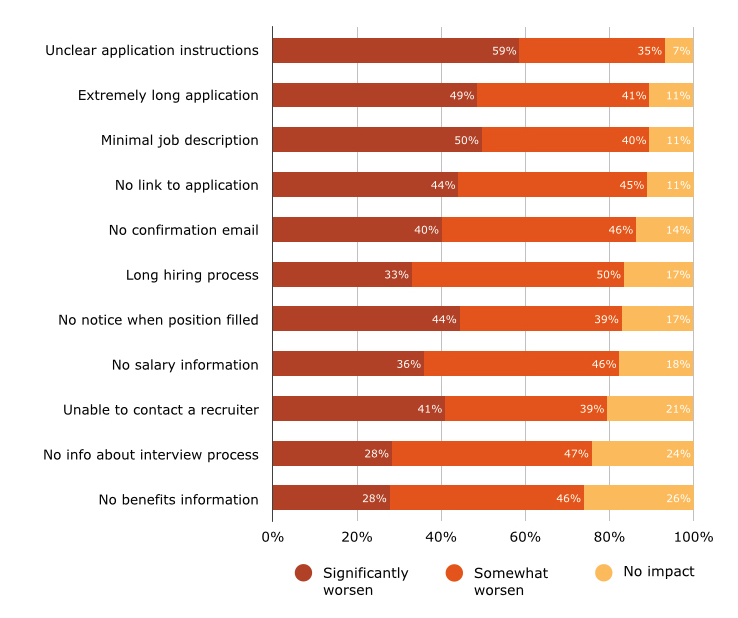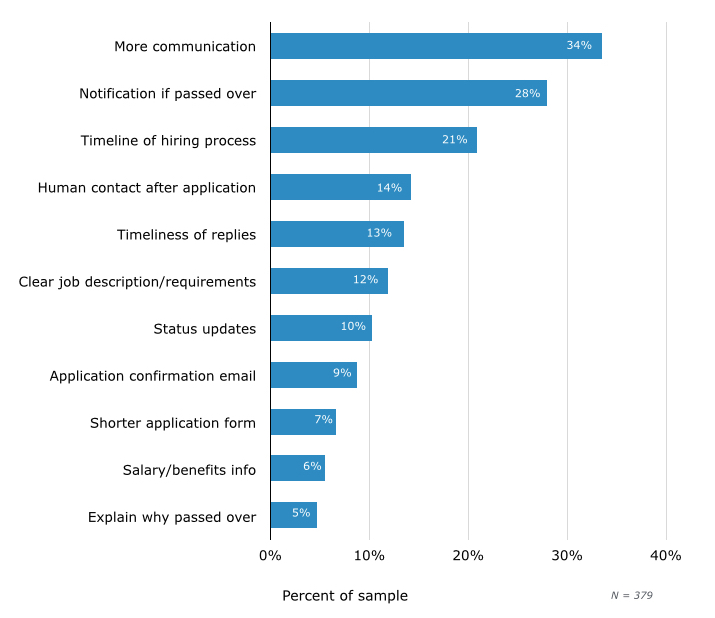How You Might Be Losing Top Talent and Potential Customers

So, what constitutes a bad candidate experience in the minds of the 78 percent of candidates who say they would share said bad experience with friends and family, or the one-third of candidates who would be less likely to buy products from the company in the future?
Time to Clear Up the Application Instructions
In a recent report, Software Advice surveyed job seekers and recruiters to help employers understand the most common factors that lead to a poor candidate experience.
An overwhelming 93 percent of the 379 job seekers polled said the No. 1 cause of a poor candidate experience was unclear application instructions.
We’ve all been there before: You find a job posting through a search engine or a company’s website and start to read through the instructions. Skimming at first – how hard can a job application be? — and then rereading a second and a third time with each pass slower than the previous. By the end of the process, you are either completely discouraged from continuing or have lost all interest in working for this company.
If this is happening on your career website or social media page, it’s not a good start to landing quality candidates – not when there are so many companies competing for top talent. According to the job seekers in the Software Advice survey, the job posting has to have two key elements: clear instructions and an application of reasonable length.
Of course, these elements are general guidelines and can apply to many aspects of the hiring process, but they lay the foundation for all your moves as a recruiter or hiring manager. Does the job posting clearly state what materials an applicant needs to provide or where to send them? Does it take a reasonable amount of time to fill out an application? Can the applicant create an account and save their personal information or apply for multiple job postings at once?

Courtesy of Software Advice
You should spend some time crafting the job posting and try to read it the way a candidate would. Double and triple check all links on your company career page, social media pages, and job sites to ensure they work and take the candidate to the correct pages. Nothing can discourage a candidate from applying to a job like technical issues inside the posting itself.
Failure to Communicate Is a Failure to Recruit
As with friends, family, and significant others, a breakdown in communication between recruiters and candidates can be a breakdown in the relationship. Recruiters and hiring managers have to keep applicants in the loop throughout the recruiting process and have to be up front with them from day one.
In the same Software Advice survey, 34 percent of job seekers said they wanted more communication with the hiring manager or recruiter throughout the recruiting process. Channeling my inner Cool Hand Luke here: “What we [recruiters] have here is a failure to communicate.”
What exactly do candidates want to know? The following are the top five pieces of information most applicants wanted recruiters to communicate with them during the recruiting process:
- Notification if they’ve been passed over for the position (28 percent)
- The timeline of the hiring process (21 percent)
- Human contact after the initial application (14 percent)
- Timeline of replies (13 percent)
- Clear job description and requirements (12 percent)

Courtesy of Software Advice
No one enjoys giving or receiving bad news. But the way to handle rejections is not by avoiding them, but by communicating your decision with the applicant clearly and professionally. At the least, you should send a simple email so the candidate has closure with that job posting and can move on to another.
Denni Oravec, director of programs for The Talent Board (the nonprofit organization that puts on the CandidateExperience Awards), says companies that provide the best candidate experience are also the companies that provide feedback to the candidates throughout the recruiting process.
And she isn’t the only one spreading this gospel.
“If limited resources and large volumes of applications prohibit a customized response, at the very least, set up an automatic reply with a quick note on the timeframe of hiring, so the candidate knows you received his or her application and is aware of your hiring timeline,” Sanja Licina, Ph.D and senior director of talent intelligence at CareerBuilder, told Forbes. “Always follow up with candidates who ultimately weren’t selected for the job after an interview.”
Why is this important? After all, you didn’t hire this candidate. You went a different direction. You’ll never see them again.
You’re right, you won’t – not as an employee and more than likely not as a future customer.
You want to leave a good impression on every person who interacts with your company. Yes, you may have rejected a candidate, but if the overall candidate experience was enjoyable, the candidate will tell others and may even send more applicants your way.
Senior Vice President of People Operations at Google, Laszlo Bock, said Google receives more than three million job applications every year and only hires 7,000 people – an admission rate 20 times more exclusive than Harvard or Stanford. But because the company’s recruitment process and candidate experience are so fair and respected, more than 90 percent of rejected applicants reportedly would still recommend someone to work at Google.
Not a bad company to emulate.
A version of this article originally appeared on Zoho’s blog.

